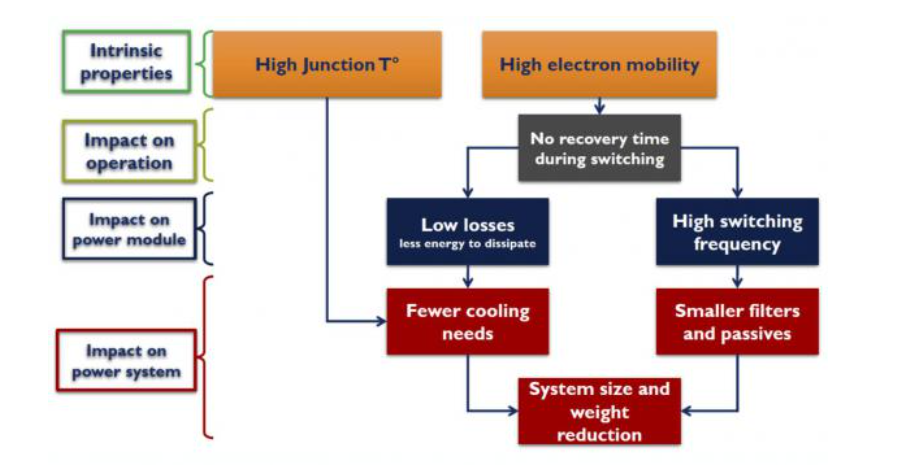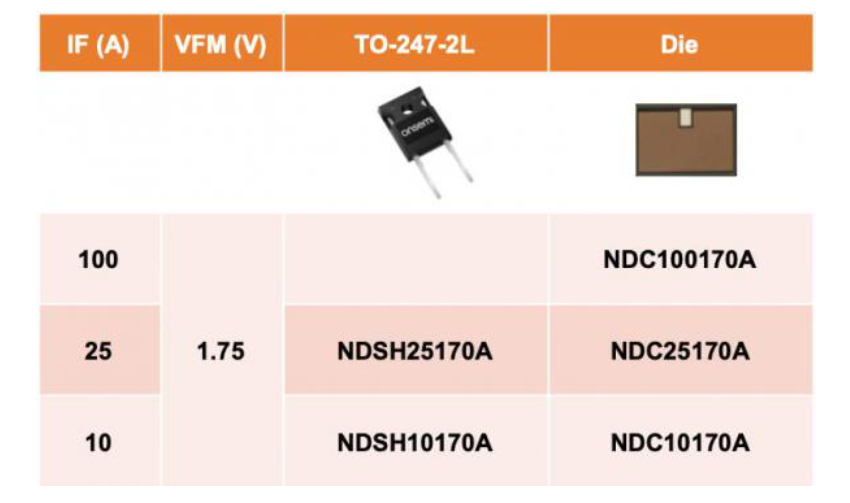
SiC band Gap (WBG) devices are critical for applications such as automotive and renewable energy today. As our world moves towards using sustainable energy sources (mainly electricity), energy efficiency is more important than ever.
One way to improve the efficiency of switching modes is to reduce copper losses and switching losses. However, to meet this challenge, DC bus voltages are constantly rising, and semiconductor technology must evolve to keep pace. These technologies are essential for companies to meet their carbon reduction commitments.
In this article, ON Semiconductor explores how next-generation SiC devices are evolving to meet the challenges of the latest applications. This article will also explain the importance of a robust end-to-end supply chain to ensure continued success.
In many application areas, there are many different factors that are driving the acceleration of technology. Taking the two most important markets, industrial and automotive, for example, the key trends that dominate are improving energy efficiency, shrinking form factors and improving perception with image sensing.
In the industrial sector, advances in MOSFETs and power modules are being used to optimize the energy efficiency and system cost of various industrial systems. Two areas in particular have benefited, namely EV charging infrastructure and alternative/renewable energy applications (such as solar).
Cost and performance are common threads in many industrial applications. The challenge for designers is to get solar inverters to deliver more power without increasing their size, or to reduce the heat dissipation costs associated with storage. Reducing the cost of charging is an important way to popularize electric passenger cars. However, it is crucial to achieve faster charging capabilities with wall-mounted DC charging piles or DC fast charging without the need for additional heat dissipation.
In the automotive sector, energy efficiency is closely related to the range of the vehicle and the size, weight and cost of the on-board electronics. In electric/hybrid vehicles, the deployment of SiC solutions offers significant performance gains compared to the deployment of IGBT power modules. At the same time, vehicle cpus, LED lighting and body electronics can also benefit from better power management.
A key point is the main drive inverter, which affects the overall energy efficiency of the vehicle and thus limits the driving range. According to the driving scenario, light passenger cars are driven under light load conditions most of the time, so compared with IGBT solutions, SiC has obvious advantages in improving energy efficiency. In addition, the on-board charger (OBC) size needs to be as small as possible. Only wide-band gap devices that support high switching frequencies can achieve a smaller form factor. Every ounce of energy saved increases the total mileage of the vehicle, thus reducing range anxiety.
Advantages of SiC technology for today's applications
All power conversions in automotive and industrial applications rely on semiconductor-based switching devices and diodes for high energy efficiency and reduced conversion losses. As a result, the semiconductor industry has been working to improve the performance of silicon-based semiconductor devices used in power applications, particularly IGBTs, MOSFETs, and diodes. Combined with the innovation of the power conversion topology, unprecedented performance can be achieved.
Figure 1: Multiple applications need to take full advantage of SiC technology

As existing silicon-based semiconductor devices reach the limits of their capabilities, new materials are needed to continue improving energy efficiency. Wide band gap (WBG) materials, such as SiC and gallium nitride (GaN), are promising in the future. The need for higher performance, density and reliability in electrical systems is pushing SiC technology beyond its limits.
Whether used in automotive main drives, solar inverters or electric vehicle chargers, SIC-based MOSFETs and diodes offer better performance and lower system-level costs than existing silicon-based IGBTs and rectifiers. The wide band gap characteristics of SiC support higher critical fields than silicon, so higher blocking voltage capabilities such as 1700 V and 2000 V can be achieved. In addition, the electron mobility and saturation speed of SiC are intrinsically higher than that of Si devices, so they can operate at significantly higher frequencies and junction temperatures, both of which are very advantageous. In addition, SIC-based devices have relatively lower switching losses and higher frequencies, which helps reduce the size, weight and cost of the associated passive components, including magnetic components and capacitors.
Figure 2: Wide band gap materials such as SiC bring many benefits to power systems

As on-off losses and switching losses are significantly reduced, SIC-based power solutions generate less heat. In addition, SiC devices are able to operate at junction temperatures (Tj) of up to 175°C, which means a significant reduction in the need for heat dissipation measures such as fans and radiators, saving system size, weight and cost, and ensuring greater reliability even in challenging, space-constrained applications.
The need for higher voltage devices
The wide band gap characteristics of SiC support higher critical fields than silicon, so higher blocking voltage capabilities such as 1700 V and 2000 V can be achieved. For a given amount of power, increasing the voltage will reduce the total current requirement and thus the total copper loss. In renewable energy applications such as solar photovoltaic (PV) systems, the DC bus voltage from PV panels has been increased from 600 V to 1500 V to improve energy efficiency. Similarly, light passenger cars are transitioning from 400 V buses to 800 V buses (and in some cases 1000 V buses) to improve energy efficiency and reduce charging times. In the past, for 400 V bus voltage, the device used was rated at 750 V, but now higher voltage ratings, such as 1200 V, or even 1700 V, are required to ensure that the device works reliably in these applications.
Latest technology
To meet the need for higher breakdown voltages, On has developed a series of 1700 V M1 flat EliteSiC MOSFET devices optimized for fast switching applications. The NTH4L028N170M1 is one of these first devices with a VDSS of 1700 V and a higher VGS of -15/+25 V. The device has an ultra-low RDS(ON) typical value of only 28 mW.
The new 1700 V MOSFETs can operate at junction temperatures (Tj) of up to 175°C, and the associated heat sink size can be significantly reduced or even completely eliminated. The NTH4L028N170M1 has a Kelvin source connection on the fourth pin (TO-247-4L package), which reduces on-power consumption and gate noise. There is also a D2PAK-7L configuration that further reduces package parasitism in devices such as the NTBG028N170M1.
Figure 3: On's new 1700 V EliteSiC MOSFETs

ON Semiconductor introduces 1700 V 1000 mW SiC MOSFETs in TO-247-3L and D2PAK-7L packages for high-reliability auxiliary power units in electric vehicle charging and renewable energy applications.
In addition to MOSFETs, On has developed a family of 1700 V SiC Schottky diodes. D1 series devices with this rating provide a greater voltage margin between the reverse peak voltage (VRRM) of the diode and the reverse repeat peak voltage. In particular, the new devices offer lower peak forward voltage (VFM), maximum forward voltage and excellent reverse leakage current even at high temperatures, enabling designers to achieve designs that operate stably at high temperatures and pressures.
Figure 4: On Semiconductor's new 1700 V Schottky diode

Conclusion
With the performance of SiC, designers will be able to meet the demands of today's challenging applications, including automotive, renewable energy and industrial applications, especially in terms of power density and heat dissipation.
SiC technology is maturing and key application areas are evolving and advancing, so SiC must also evolve to meet the growing demand. For example, there is a need for higher breakdown voltages, which On meets with the introduction of new 1700 V SiC MOSFETs and diodes. In addition, On is currently developing 2000 V SiC MOSFET technology to support emerging applications such as solar power, solid-state transformers and electronic circuit breakers.
Heisener Electronic is a famous international One Stop Purchasing Service Provider of Electronic Components. Based on the concept of Customer-orientation and Innovation, a good process control system, professional management team, advanced inventory management technology, we can provide one-stop electronic component supporting services that Heisener is the preferred partner for all the enterprises and research institutions.
